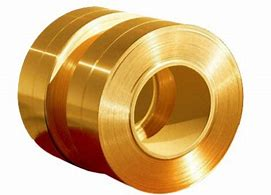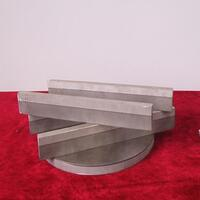1. Introduction
In the past 48 hours, a major trend has emerged in sustainable architecture: leading design firms like Studio Gang and Snøhetta are increasingly specifying corten steel facade and zinc clad dormer systems for residential projects due to their longevity and low maintenance. As homeowners seek modern, fire-resistant, and eco-friendly exteriors, metal clad siding has surged in popularity—but proper installation and upkeep are critical to avoid costly mistakes.

Whether you’re building a new metal clad house or re-siding an existing structure, understanding the nuances of materials like aluminum clad steel, corrugated steel facade panels, or vertical standing seam metal siding can make all the difference. This guide delivers a clear, step-by-step approach to installing and maintaining metal clad wall systems while addressing real-world problems like thermal bridging, rust, and poor drainage.
2. Understanding Metal Clad: What It Is and Why It Matters
Before diving into installation, it’s essential to grasp what ‘metal clad’ actually means. The term ‘clad metal meaning’ refers to a composite material where one metal is bonded—often through roll bonding or electroplating—to another for enhanced performance. For example, aluminum clad stainless steel combines corrosion resistance with strength, while copper nickel clad offers marine-grade durability.
Common types include:
- Corten steel siding (ideal for rustic-modern aesthetics)
- Zinc metal siding (self-healing patina, long lifespan)
- Colorbond standing seam or PAC CLAD HWP panels (pre-finished, durable)
- Exterior corrugated metal siding (budget-friendly, industrial look)
These materials fall under broader categories like clad metals, clad steel, or alloy clad systems used in everything from metal clad buildings to sheds and column covers.
3. Step-by-Step Installation Guide for Metal Clad Siding
3.1. Prepare the Substrate and Weather Barrier

Start with a clean, level sheathing surface. Install a high-quality house wrap or rigid foam insulation to prevent moisture intrusion and improve energy efficiency—especially important for metal clad insulation performance. Never attach metal directly to bare wood or masonry without a drainage plane.
3.2. Install Furring Strips (If Needed)
For rainscreen applications—which are highly recommended with steel facade or zinc facade systems—add horizontal furring strips (typically 1×3 wood or aluminum) to create an air gap. This allows airflow behind the metal clad wall, reducing condensation and extending panel life.
3.3. Begin at the Bottom with Starter Trim
Use manufacturer-recommended starter strips or PAC CLAD coping at the base. Ensure panels are level; even a slight tilt can cause water pooling. Fasten with corrosion-resistant screws designed for metal—never nails.
3.4. Attach Panels Correctly
For standing seam siding (like PAC CLAD standing seam roof or vertical standing seam metal siding), follow the clip-and-lock system precisely. Over-tightening can restrict thermal expansion, leading to buckling. Leave a small gap (per manufacturer specs) at joints to accommodate temperature shifts.

For corrugated steel facade or metal weatherboard styles, overlap panels as directed—usually 1–2 corrugations—and use neoprene-washed fasteners to prevent leaks.
3.5. Seal Penetrations and Edges
Use compatible sealants around windows, doors, and utility penetrations. Install trim pieces like PAC CLAD column covers or custom flashing at corners and eaves to maintain a clean look and weather-tight seal.
4. Common Problems and Practical Solutions
4.1. Rust or Corrosion on Steel Clad Surfaces
Even clad steel can corrode if scratched or exposed to salt air. Solution: Touch up with matching paint or apply a clear protective coating. For corten steel siding cost concerns, remember that its rust layer is intentional—but only stable in dry-to-moderate climates.
4.2. Oil Canning (Wavy Appearance)
This distortion often occurs with large, flat metal sheets. Prevent it by using stiffer gauge material (e.g., 22-gauge vs. 26-gauge), adding more support clips, or choosing textured finishes like diamond plate steel or perforated plate designs.
4.3. Poor Drainage Leading to Water Damage
Ensure your metal clad wall has proper slope and drip edges. Avoid butting panels directly against roofing or concrete—maintain a 1–2 inch clearance with weep holes if needed.
4.4. Thermal Bridging and Condensation
Metal conducts heat, which can lead to interior condensation in cold climates. Combat this by pairing your metal clad siding with continuous exterior insulation (e.g., mineral wool or rigid foam) behind the cladding.
5. Maintenance Tips for Longevity
Inspect your metal clad house annually for loose fasteners, damaged seams, or debris buildup. Clean gently with mild soap and water—avoid abrasive cleaners that strip protective coatings. For zinc clad roof or copper siding, allow natural patina to develop; don’t polish it away.
If you’re using aluminum clad pipe insulation or metal clad electrical wire near the exterior, ensure all penetrations are sealed to prevent moisture wicking.
6. Conclusion
Installing and maintaining metal clad siding doesn’t have to be daunting. With the right prep, quality materials like corten steel plate, aluminum clad sheet, or PAC CLAD systems, and attention to detail during installation, your metal clad building can stand strong for decades. Whether you choose a sleek steel facade or rustic corrugated steel look, this guide ensures your investment stays beautiful, functional, and resilient against the elements.
Our Website founded on October 17, 2012, is a high-tech enterprise committed to the research and development, production, processing, sales and technical services of ceramic relative materials such as How. Our products includes but not limited to Boron Carbide Ceramic Products, Boron Nitride Ceramic Products, Silicon Carbide Ceramic Products, Silicon Nitride Ceramic Products, Zirconium Dioxide Ceramic Products, etc. If you are interested, please feel free to contact us.
